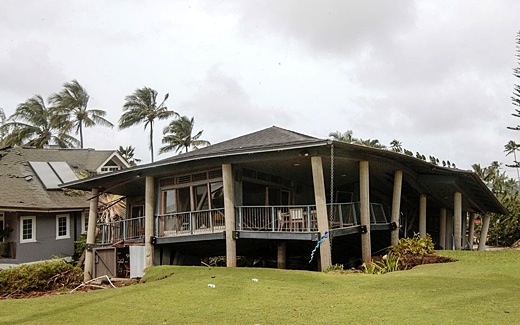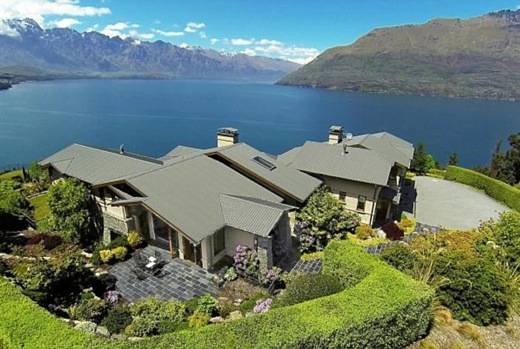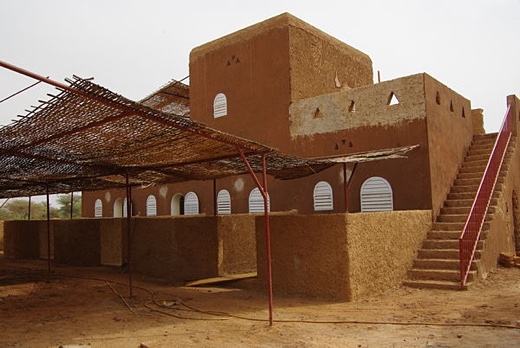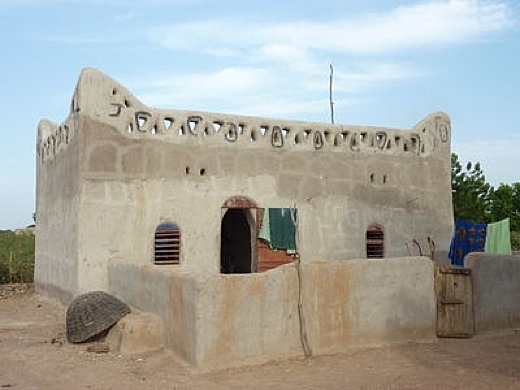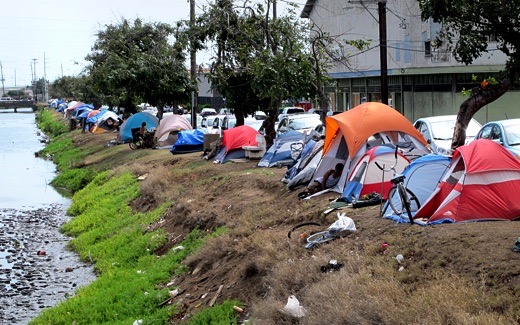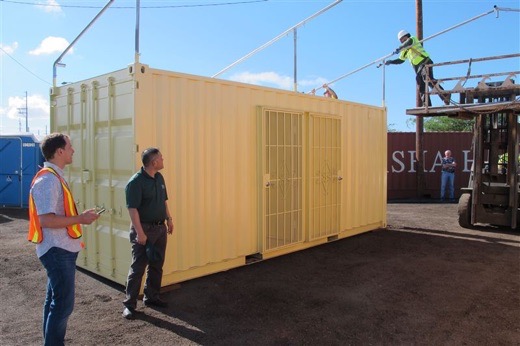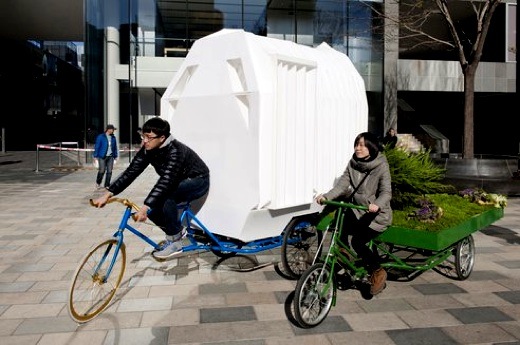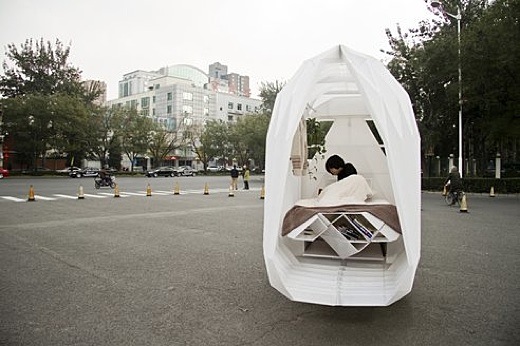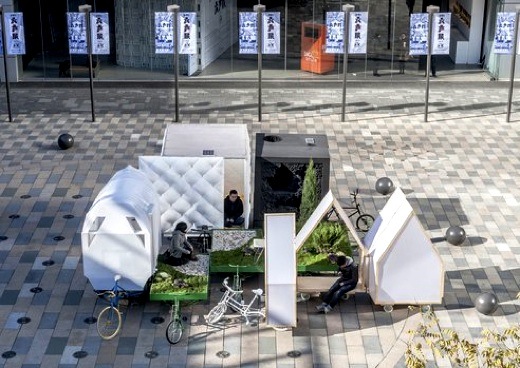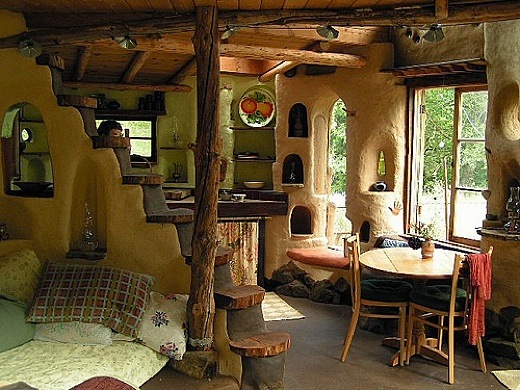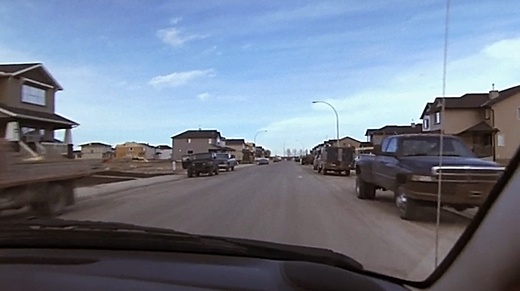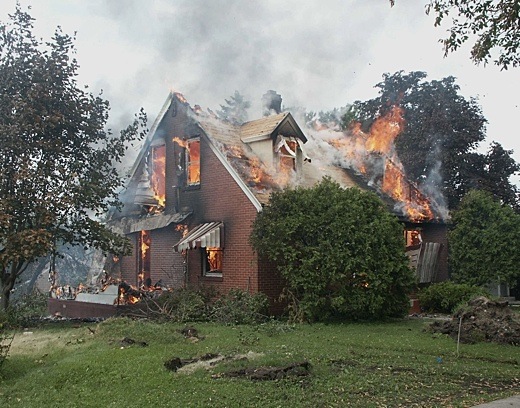SUBHEAD: What permaculturalists are doing is the most important activity that any group is doing on the planet.
By Steve Whitman & Sharon Ferguson 30 July 2012 in Sustainable Cities -
(
http://sustainablecitiescollective.com/sharon-ferguson/52646/taking-permaculture-path-community-resilience)
[IB Publisher's note: This is a commercial real estate development in New Hampshire that is being promoted as "sustainable, resilient and based on permaculture principles. Automobile parking is separated from the units, yet there is access to the generously sized units. Financial arrangements appear to be like those for condominiums ($400k units with two per building). There are monthly fees and steep property taxers. This is for upscale clients.]
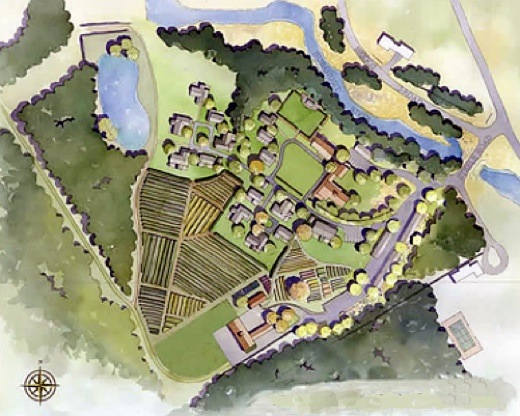 Image above: Nubanusit Neighborhood and Farm plan. From original article.
Image above: Nubanusit Neighborhood and Farm plan. From original article.
We don't know what the details of a truly sustainable future are going to be like, but we need options, we need people experimenting in all kinds of ways and permaculturalists are one of the critical groups doing that. — David Suzuki, quoted in HopeDance 2009
We need to see our communities as the ecosystems they are and consider how the components of these places can be better integrated. Permaculture is a holistic, integrated system analysis and design tool that very few planners are using. Planners need to know about permaculture and use it as a framework to guide our communities.
Change Agents & Ecosystem Designers
Planners serve as change agents in their communities, regions, and ultimately on a global scale. As a profession we play a pivotal role in facilitating dialogue about pressing issues that will impact our collective futures. This includes educating the public on a range of topics from public health to climate change and energy concerns, economics, and many others.
Although many in the profession would not recognize this role, we are ecosystem designers as well. Our comprehensive plans and regulations guide development and redevelopment efforts. These projects result in places that serve as ecosystems for humans and other species, but all too often they do not serve the community and the users as well as they could.
With our economy and energy futures in flux, now is an opportunity to transition to more ecological and robust models of development that will serve our communities and all species more effectively in the future. What does this look like? It will look different in each of our communities due to our unique geography and history, the needs of our population, and ultimately the goals we set. However, we can all use the same framework and some of the same tools to get to our chosen futures.
Planners must look more expansively at developing local initiatives. We have access to many of the solutions we need locally. Permaculture offers a pathway to a positive transition beyond sustainability to resilient communities. Permaculture is an approach to designing human settlements and agricultural systems that are modeled on the relationships found in natural ecologies.
A Permaculture Primer
Planners are the facilitators of both long-range planning efforts, and short-term review and permitting activities in our communities. The adoption of the permaculture framework is overdue. Permaculture is considered one of the most holistic, integrated system analysis and design tools in the world, and yet very few planners are using it.
In the 1970s, while working in Australia, Bill Mollison and David Holmgren coined the term permaculture by combining the words "permanent" and "agriculture." The notion of permaculture was based on the work of farmers and scholars documenting the potential for "permanent agriculture" in the early 1900s, the knowledge and wisdom of indigenous peoples worldwide, and an interest in systems thinking. The term permaculture was then expanded to also stand for "permanent culture" to incorporate the social aspects that are needed in a sustainable system.
Permaculture is fast becoming one of the most effective design methodologies for attaining sustainability worldwide. Although rooted in horticulture and agriculture, permaculture draws from many disciplines including ecology, appropriate technology, architecture, and international development.
Examples of applying concepts of permaculture abound in the United States, and permaculture design courses are taught on a routine basis. There is apparently no entity keeping track of the number of permaculture course graduates, but we conservatively estimate that at least 100,000 people in the United States have graduated from certificate courses in permaculture.
At this point, you may be wondering what is the difference between sustainable community planning and permaculture. Permaculture differs from sustainable community planning efforts in that it seeks to integrate the proposed sustainable elements (e.g., water catchment, renewable energy, district heating, food growing, waste recycling, transportation, etc.) into a whole system that operates efficiently so that the number of inputs are minimized but outputs attained are maximized.
The goal is to create an ecosystem that provides as many useful products and functions out of the system as the designer's abilities allow while healing the planet. A maxim of design is that the yield of a system is theoretically unlimited (or only limited by the imagination and information of the designer) (Mollison 1998).
Permaculture is much more than organic agriculture. It integrates buildings and their landscapes, and permaculture projects incorporate all of their elements into a comprehensive and mutually beneficial design. Each element is analyzed to ensure that it serves multiple functions, and is placed with a strong relationship to the other elements in the system to maximize productivity. Permaculture designs are inspired by natural patterns and range from small urban park retrofits to mixed land-use subdivisions and large rural farms.
During the last two decades we have seen the formation of intentional communities including cohousing developments, many of which are designed in accordance with permaculture principles. One example of this is Nubanusit Neighborhood and Farm, discussed below.
Resilience & Transition
As we consider using permaculture in our planning efforts, resilience should be the goal. Resilience refers to the ability of a system to hold together and maintain its ability to function in the face of change and shocks from the outside. Resilient communities possess the ability to withstand external shocks and can bounce back quickly from sudden environmental or economic changes. Planners need to place resilience building at the heart of any plans we make for the future (Hopkins 2008).
This is the approach being used in "transition town" efforts around the globe, a movement that itself was born from a permaculture design effort. The transition town movement is a response to the twin challenges of peak oil and climate change. Transition initiatives are based on assumptions (among others) that life with dramatically lower energy consumption is inevitable, and that our settlements and communities currently lack the resilience to enable them to weather the severe energy shocks that will accompany peak oil.
Transition town efforts focus on rebuilding local agriculture and food production, localizing energy production, rediscovering local building materials, and rethinking how we manage waste, all of which build resilience. Currently, in the United States alone, there are at least 115 official Transition Town Initiatives (Transition United States; Transition Network).
Applicable at Any Scale
How can permaculture be utilized by planners to create communities that are more resilient to outside shocks from the global economy, climate change, and energy issues? There are many points of intervention. Permaculture tools and strategies can, in fact, be applied at many different scales: home gardens, city blocks, farms, villages, cities, and entire nations. Four brief examples illustrate the range of applying permaculture tools and strategies.
 Image above: Figure 1 - Public right-of-way, pre-water harvesting (1994). Source: Brad Lancaster. From original article.
Image above: Figure 1 - Public right-of-way, pre-water harvesting (1994). Source: Brad Lancaster. From original article.
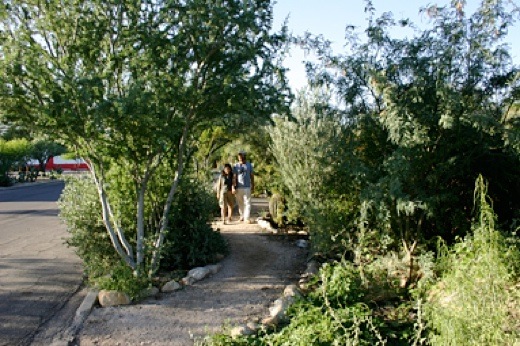 Image above: Figure 2 - Public right-of-way, post-water harvesting and planting (2006). Source: Brad Lancaster. From original article.
Rainwater Harvesting
Image above: Figure 2 - Public right-of-way, post-water harvesting and planting (2006). Source: Brad Lancaster. From original article.
Rainwater Harvesting
Rainwater harvesting is one example of applying permaculture principles. Urban strategies for harvesting rainwater through the capture of street runoff grew out of the work of permaculturist Brad Lancaster in Tucson, Arizona. Lancaster and his brother bought a rundown house in Tucson and under the cover of night they cut through the curbs along the adjoining right-of-way to harvest the stormwater runoff rather than let it be lost to the storm sewer. The runoff was captured along both sides of the street and directed to tree wells. The before-and-after photographs of vegetation shown in Figures 1 and 2, taken from the same vantage point, are a powerful statement of the potential of permaculture strategies.
City officials in Tucson saw Lancaster's resourceful innovation. He then began working with city engineers to convince them of the viability of the practice. City staff then improved upon the design of the curb cuts and, as a result, the capture of stormwater runoff was legalized on residential streets.
 Image above: Aerial photo of homes at Nubanusit Neighborhood and Farm. From architect's website (http://www.houzz.com/projects/418198/Nubanusit--Neighborhood---Farm-CoHousing-Community).
Nubanusit Neighborhood and Farm
Image above: Aerial photo of homes at Nubanusit Neighborhood and Farm. From architect's website (http://www.houzz.com/projects/418198/Nubanusit--Neighborhood---Farm-CoHousing-Community).
Nubanusit Neighborhood and Farm
An example application of permaculture is Nubanusit Neighborhood and Farm located in Peterborough, New Hampshire. Nubanusit is a 70-acre property (see Figure 3) designed using permaculture design and cohousing practices to create a dense village of residential units, shared community space, and agricultural land while preserving the balance of the property in its natural state.
The community is composed of LEED-certified structures and includes a range of appropriate technologies including district heating and photovoltaics. The project was possible because of a new community comprehensive plan and regulatory changes that encouraged open space developments and mixed land uses.
Planning in Bloomington, Indiana
When creating comprehensive plans we should broadly consider permaculture and resilience. In some of the more cutting-edge comprehensive planning efforts in the United States, these issues are only addressed (at best) in separate peak oil or climate adaptation plans. In communities that do address these larger picture issues in their long-range planning documents, there is often a lack of implementation via land-use regulations. A good example of implementation is Bloomington, Indiana.
In Bloomington, a plan titled "Redefining Prosperity: Energy Descent and Community Resilience" was adopted in December 2009 with an emphasis on creating food security. That effort is based on both permaculture and transition efforts and includes a range of recommendations, from creating a centralized composting system to removing and reducing the legal, institutional, and cultural barriers to farming within and around the city.
Systems Approach for Cuba
The collapse of the Soviet Union in 1991 crushed the Cuban economy. Having been entirely dependent on fossil fuels from the Soviet Union, Cuba then had to deal with severe shortages of petroleum. The loss of support from the Soviet Union had a crippling effect on the transportation, industrial, and agricultural systems in Cuba.
Along with fossil fuel loss, Cuba suffered an 80 percent loss of food imports, resulting in widespread food shortages. Cubans were forced to explore every avenue possible to increase their food production without benefit of fuel for farm equipment or inputs of chemical fertilizer (Cuba History.org).
In 1993, a group of Australian permaculturists arrived in Cuba in response to the economic collapse and taught their techniques, which were soon implemented in urban food growing schemes across the nation. Much of the success of Cuba's urban agriculture and food security has been attributed to the introduction of permaculture. The city of Havana now produces more than 60 percent of its fruit and vegetables within the city, owing to the techniques taught by those first permaculturists (Morgan, Murphy, and Quinn 2006).
Demonstration & Education
Across the country, there are examples of established and emerging permaculture demonstration projects. We need more of these. We need to guide the implementation of permaculture demonstration projects on municipal properties and elsewhere. To do so, however, planners need to get trained to engage people and assist localities in thinking about permaculture. Planners can even complete a permaculture design certification program.
The permaculture design certificate course is a minimum of 72 hours with a core curriculum that is used internationally. Courses are offered regularly in most states and around the world, or you can take the course in a place that you always wanted to visit and combine the course with a vacation. The format for these offerings range from two-week residential offerings to weekend formats spread out over a season or two. The permaculture design certificate is an internationally recognized credential for professionals.
Conclusion
Permaculture is a systems approach to planning for the future that goes well beyond smart growth, low-impact development, habitat protection, complete streets, and other initiatives that are often viewed as separate entities. Permaculture incorporates these and other concepts more holistically in a way that creates an integrated system. Enabling and incentivizing projects that help our communities become more resilient is important and will support our local economies and ecosystems while building local capacity.
Permaculture designs are guided by a set of ethics and principles that can be used at any scale. Ideally, this holistic ecosystem approach will become commonplace in regulatory and non-regulatory initiatives. We need permaculture as a framework to better serve all populations, build community, retrofit infrastructure, and support the local economy.
We need to see our communities as the ecosystems they are and consider how the components of these places can be better integrated. For instance, certain landscapes can be designed to require little maintenance, provide clean, infiltrated stormwater, create valuable habitat, and provide edible foods for people. That outcome would be a better asset to the community than what is currently required in most places. So, planners, be a change agent in your communities!
References
Cuba History.org. "History of Cuban Nation, from Colonial Days to the Present."
www.cubahistory.org/ Accessed April 21, 2012.
Hopkins, Rob. 2008. The Transition Handbook: From Oil Dependency to Local Resilience. White River Junction, Vt.: Chelsea Green Publishing.
Mollison, Bill. 1988. Permaculture: A Designer's Manual. Tyalgum, Australia: Tagari Publications.
Morgan, Faith, Murphy, Eugene "Pat," and Quinn, Megan. 2006. "The Power of Community: How Cuba Survived Peak Oil." Documentary.
• Steve Whitman is a planner with Jeffrey H. Taylor & Associates in New Hampshire. His work is focused largely on community planning and sustainability issues. Whitman is a certified permaculture teacher, and he …
• Sharon Ferguson is a senior planner with the Municipality of Anchorage, Alaska, and a certified permaculture designer and teacher. Ferguson co-founded the APA interest group Sustainable Community Planning.
.
